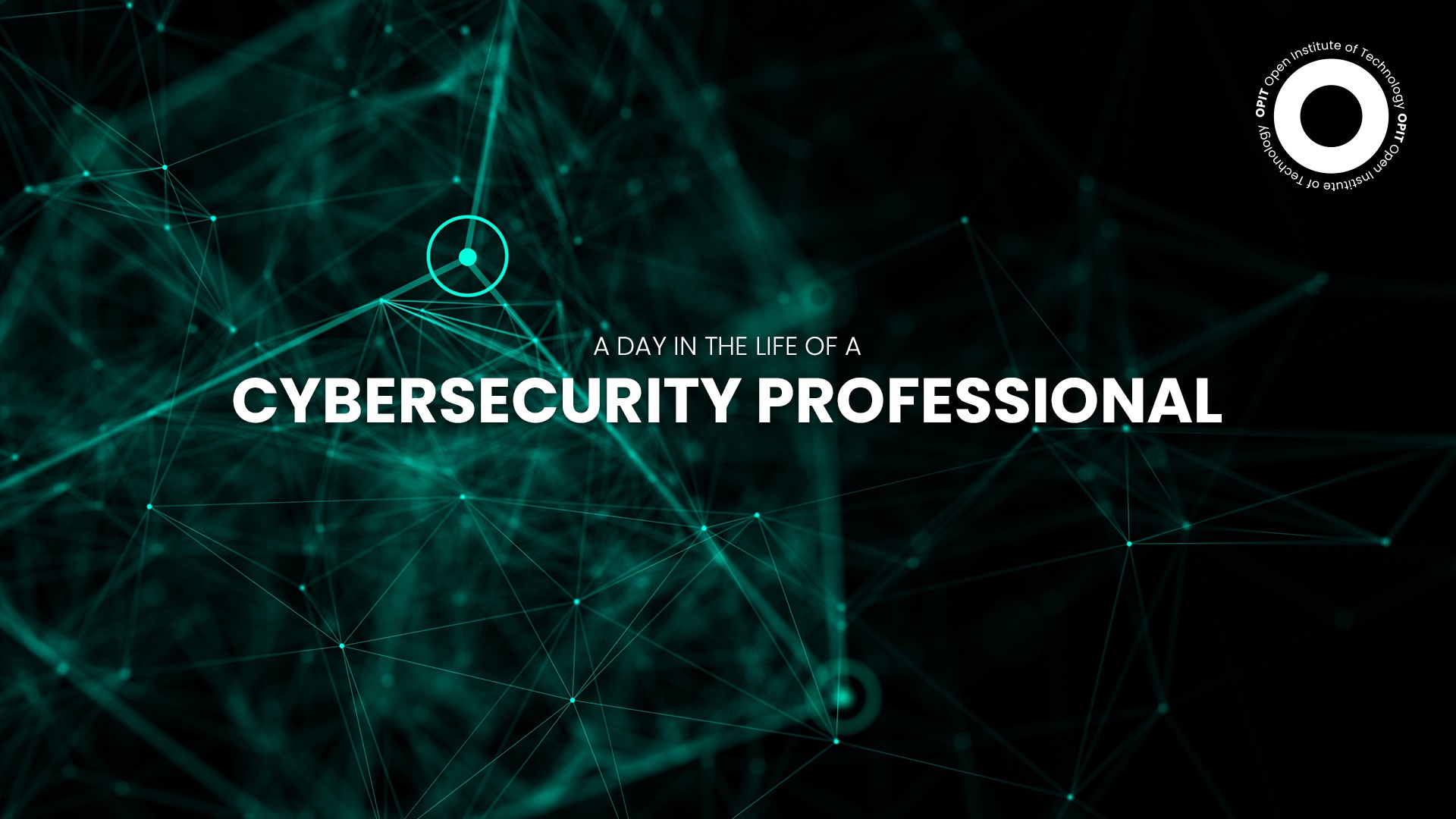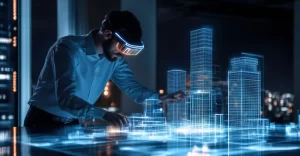What does an average day look like for somebody working in cybersecurity?
That isn’t an easy question to answer when you consider the vastness of the field. Somebody who works in cybersecurity needs to stay constantly abreast of industry changes – especially new attacks cooked up by cybercriminals – and help their employers create and tweak their security plans.
However, thanks to Tom Vazdar, who has developed the Open Institute of Technology’s (OPIT’s) Master’s Degree in Enterprise Cybersecurity, we can provide some insight into what your average day may look like.
Check out OPIT degrees
-
Career aligned
-
Fully Online
-
EU-accredited institution
Who Is Tom Vazdar?
Serving as the Program Chair of OPIT’s upcoming Master’s Degree in Cybersecurity, Tom brings a vast amount of practical experience to the table. His work has spanned the globe. Tom has been employed as the Chief Security Officer for a major Croatian bank, in addition to serving as the Chief Information Officer for a company in the United States’ manufacturing sector.
His practical experience spans other industries – including technology and finance – and he’s currently completing a doctorate while running his own practice. Tom’s specialty is the behavioral aspect of cybersecurity. His deep understanding of the “culture” that surrounds the field has been shaped by his work on development strategies, policies, and frameworks for his past employers.
The Importance of Trends
The first thing Tom highlights is that a cybersecurity professional has to follow the trends in the industry. As he points out: “We are living in an era where digital transformation is accelerating, and with it, the complexity and frequency of cyber threats are also increasing.” To demonstrate this, he points to an ISACA report published in 2023 showing that cyber attacks have increased 48% in 2023 compared to 2022. More worryingly, 62% of the organizations that experience these attacks underreport them – an indication that many simply don’t have the talent to truly understand the threat they face.
As a cybersecurity professional, your role is to provide the expertise such companies are sorely lacking.
Thankfully, many business leaders understand that they need this expertise. Tom points out that 59% of leaders say they’re understaffed in the cyber department, leading to a rising demand for people with the following technical skills:
- Identity and access management
- Data protection
- Cloud computing
- DevSecOps (development, security, and operations)
Furthermore, Tom says that artificial intelligence (AI) is completely transforming the cybersecurity industry. While AI is often beneficial to professionals in the field – it can enhance threat detection and response – it is also a danger. Malicious entities can use AI to conduct a new wave of attacks, such as data poisoning, for which you need to be prepared as a cybersecurity professional.
Tom’s discussion of these emerging trends highlights one of the most critical aspects of a day in the life of a cybersecurity professional – learning is key. There is no such thing as static knowledge because the industry (and the attacks your company may face) constantly evolve.
An Average Day Broken Down
Now that you understand how important staying on top of the ever-changing trends in cybersecurity is for those in the field, it’s possible to break things down a little further. On an average day, you may find yourself working on any, some, or even all of the following tasks.
Developing and Maintaining a Cybersecurity Strategy
Given that such a large number of business leaders are understaffed and have minimal access to appropriate talent, you’ll often be tasked with creating and maintaining a company’s cybersecurity strategy.
This strategy is not as simple as creating a collection of actions to take in the event of an attack.
Tom emphasizes not only the importance of proactivity, but also of integrating a cybersecurity strategy into the wider business strategy. “It becomes part of the mission and vision,” he says. “After all, there are two things that are important to companies – their data and customer trust. If you lose customer trust, you lose your business. If you lose your data, you lose your business.”
As a technically adept professional, you’ll be tasked with building a strategy that grows ever more complex as the threats the company faces become more advanced. New technologies – such as AI and machine learning – will be used against you, with your main task being to ensure the strategy you create can fend off such technologically-empowered attacks.
The Simpler Day-to-Day
Now, let’s move away from the complexities of developing an overarching plan and go into more detail about daily responsibilities. A cybersecurity professional is usually tasked with dealing with the day-to-day maintenance of systems.
It’s all about control.
Tom says that much of the role involves proactively identifying new protective measures. For instance, software patching is key – outdated software has vulnerabilities that a hacker can exploit. You’ll need to stay up to date on the development of patches for the software your company uses and, crucially, implement those patches as soon as they’re available.
Creating regular backups is also part of this day-to-day work. It’s an area that many businesses neglect – perhaps assuming that nothing bad can happen to them – but a backup will be a lifesaver if a hacker compromises your company’s main data stores.
Tending to Your Ecosystem
It’s not simply your own institution that you must maintain as a cybersecurity professional – everyone who interacts with that institution must also be managed. Vendors, external software developers, and any other part of your supply chain need to be as risk-aware as your business. As Tom puts it: “If they don’t care about vulnerabilities in their system, and they work for you as a company, then you’ll have an issue because their risk suddenly becomes your risk.”
As such, managing the cyber security aspect of your company’s relationships with its partners is a vital part of your duties. You may engage in planning with those partners, helping them improve their practices, or cooperate with them to create strategies encompassing your entire supply chain.
Continued Education
Tom goes on to highlight just how important continued education is to the success of a cybersecurity professional. “It’s always interesting. And if you’re really passionate about it, cybersecurity becomes your lifestyle,” he says. “You want to see what’s new. What are the new attack methods, what are your competitors doing, and what is new on the market.”
He points to a simple example – phishing emails.
These emails – which were traditionally laden with spelling errors that made them easier to spot – are becoming increasingly hard to detect thanks to the use of AI. They’re written better. Failure to understand and adapt to that fact could make it harder to educate yourself and the people in your company.
Your average day may also involve educating your colleagues about upcoming threats and new attack methods they need to understand. The phishing example Tom shares applies here. Any email that looks somewhat legitimate is a threat, so continued education of your colleagues is essential to stop that threat from having its intended effect.
An Example of a Typical Project
Given how vast the cybersecurity field is, the range of projects you may work on will vary enormously. However, Tom provides an example of when he worked in the banking industry and saw the rise of the Zeus Botnet.
In this case, his responsibilities were twofold.
First – finding a way to defend against botnet attacks. That involved researching the malware to figure out how it spread, allowing him to put protective measures in place to prevent that spread. The second task involved creating educational programs, both for employees and his bank’s clients, to make them aware of the Zeus Botnet.
Here, we see the education part of the cybersecurity professional’s “average day” coming into play, complementing the more technical aspects of dealing with malware. We even see supply chain risk coming into play – each client is part of the bank’s supply chain, meaning they need to understand how to defend themselves just as much as the bank does.
The Qualifications Needed to Work in Cybersecurity
With a multitude of cybersecurity qualifications available – many covering specific niches – it’s tough to find the appropriate one to make you attractive to an employer. That’s where Tom’s work with OPIT comes in. The master’s degree that he’s developing not only focuses on the technical skills a professional needs but places those skills in a business context.
The upcoming course will offer electives in subjects such as AI, cloud security, and IoT security, granting students flexibility to pursue a specialization within their degree. The overall program is also closely aligned to industry certifications – such as those offered by CISSP – to ensure graduates are as industry-ready as they are academically qualified.
The intention, Tom says, is to fill the skills gap that 3 million businesses say they have in cybersecurity. The program provides the right blend of knowledge between technical and managerial skills, in addition to allowing students to pursue subjects of particular interest to them.
Ultimately, it doesn’t teach absolutely everything that you could learn about the industry. No course can. But it does equip you with key foundational knowledge aligned with industry certifications that make you more employable. That, combined with your continued education and completion of relevant certifications once you’re employed, means you have an enormous opportunity to build a successful cybersecurity career with OPIT.
So, the qualifications needed for the industry start with a relevant degree. They then blossom out. Professionals focus on courses that meet the specific requirements of their roles so that they learn the cybersecurity techniques that are most effective for their needs.
Check out OPIT degrees
-
Career aligned
-
Fully Online
-
EU-accredited institution






